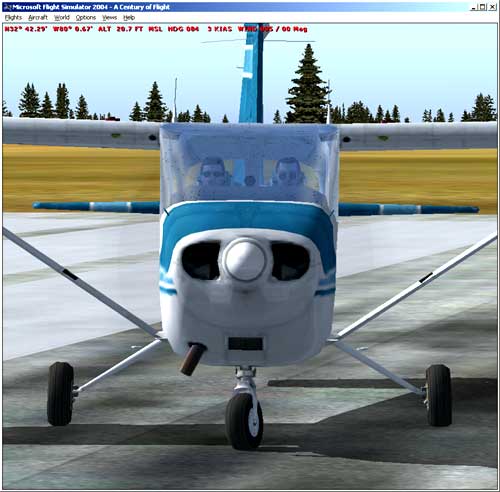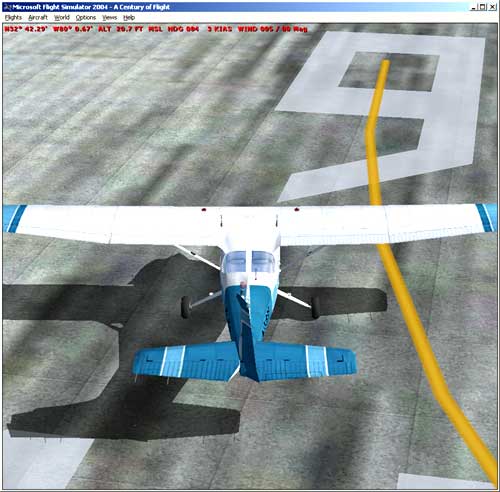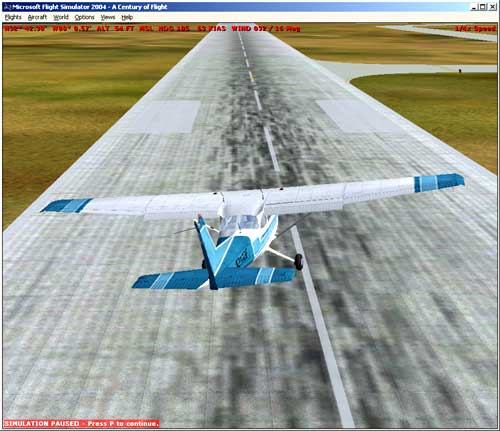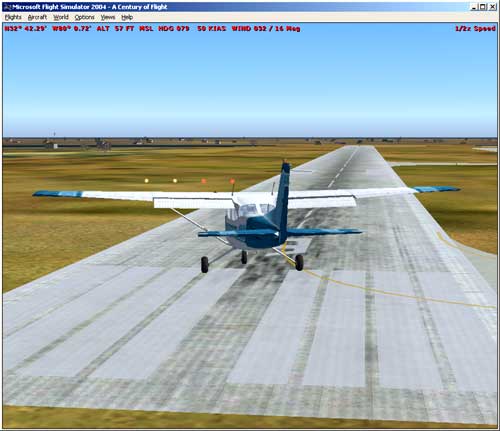|
REVIEW: CH Products Flight Sim Yoke USB and Pro Pedals USB
CH Products in Action Flying in Flight Simulator 2004
FIGURE 1. Full Right Nose Wheel Deflection Using Pro Pedals Click Photo for FSR Flight Video (you must have Flight Simulator 2004 on your computer and you need to save the file in the right place per FS instructions). Watch this airplane spin on a dime.
In Figure 1 you can see that the nose wheel is fully deflected to the right. Now look at Figure 2 below to see that the rudder is also fully deflected to the right, a position that yaws the plane to the right.
FIGURE 2. Full Right Rudder Deflection Using Pro Pedals
FIGURE 3. Overcoming a 16 Knot Crosswind: Low Wing Technique Click photo for FSR video of this landing (must have FS2004 installed locally)
In Figure 3 the aircraft is landing with a 16 knot (18.4 mph) cross wind blowing from left to right at about a 30 degree angle to the runway. Since the aircraft moves with the air mass within it flies, the plane moves left to right with the wind. One way to overcome this and keep the plane moving straight down the runway is to lower a wing into the wind. BUT...when you do this the aircraft wants to turn in the direction of the low wing (left in this case). With Pro Pedals installed, we just apply some right rudder to overcome the left turn and glide straight down the runway.
FIGURE 4. Overcoming a 16 Knot Crosswind: "Crab" Technique Click photo for FSR video of this landing (must have FS2004 installed locally)
Figure 4 shows the aircraft in a "crab", turned toward the wind. This counteracts the wind and allows the plane to move right down the runway. Although it looks like the plane is traveling right to left, it really is moving right down the runway centerline when this screen grab was taken. Hey, what are those white and red lights just beyond the left wing of the aircraft on the left side of the runway? Those are Precision Approach Path Indicators (PAPI). These lights tell you if you are on the proper glideslope, which is an imaginary line (usually with a 3 degree slope) that leads you to the runway. The PAPI lights turn all white if you are too far above the glideslope, all red if you are too low, and a combination of red and white if you are right on the proper glideslope. Who's right on the glideslope, Baby? We are!
Copyright: Mike Stiteler, 2004
|



